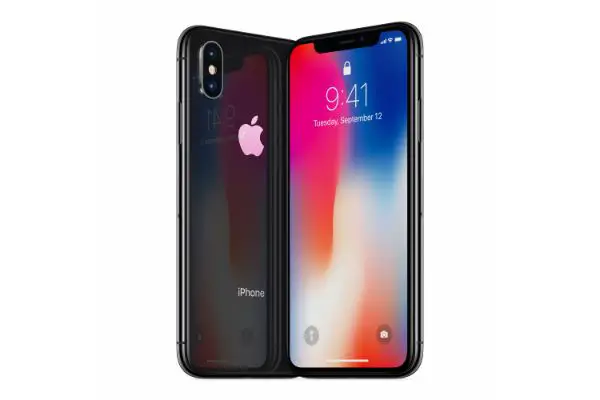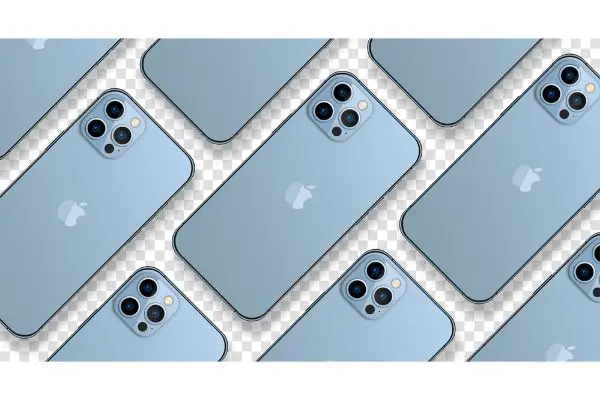Disclaimer: This post may contain affiliate links, meaning we get a small commission if you make a purchase through our links, at no cost to you. For more information, please visit our Disclaimer Page.
Apple orders iPhone screens from many companies, but the primary supplier is Samsung. It had remained this way since the iPhone 4 when Apple ordered the first screens from them. Also, Apple’s decision is hard to criticize, as Samsung is one of the best screen makers on the market.

(Attribution: ©[alexey_boldin]/Depositphotos.com)
Table of Contents
Does Samsung Make iPhone X Screens?
It’s already clear that Samsung makes displays for iPhones on contractual terms. This implies that there’s always a chance that your iPhone’s screen is from another company other than Samsung. In the case of the iPhone X from Apple, are the screens also made by the South Korean company?
Like most other iPhones, the display was designed by Apple but produced by Samsung. However, while Samsung supplied the displays, they’re fundamentally different from what you’ll find on an equivalent Samsung phone.
Understanding the roles of Apple and Samsung in producing display panels for the iPhone X requires reviewing the circumstances. When the iPhone X came out in 2017, DisplayMate ranked it the best smartphone display ahead of Samsung’s devices.
If Apple purchased pre-made screens from Samsung, shouldn’t iPhone displays would be on par with or slightly worse than Samsung screens?
Instead of finding and buying one of Samsung’s displays, Apple outlines what they want in a model screen. Of course, necessary details like the maximum brightness, color accuracy, contrast ratios, and viewing angles will depend on Apple’s variables.
Using the data provided by Apple, Samsung will manufacture custom displays for the iPhones. This is what makes them different than the displays used for Samsung’s phones. The result? The iPhone X series showed up with screens that outperformed all other major competitors, including the manufacturer itself.
Summarily, all the displays used for Apple’s iPhone X series were manufactured by Samsung. However, Apple single-handedly designed the displays, tuning them to be the best in the market at the time. On the other hand, Samsung only got contracted to produce the designed screens, making them the best in class.
Are iPhone And Samsung Screens The Same?
Samsung makes most of the screens used in iPhones, starting from the iPhone 4 down to the iPhone 13 series. Since most products from the same manufacturer are likely the same, you may wonder if this applies to smartphone displays.
Firstly, note that Samsung doesn’t make the same screens for iPhones and the phones in its Galaxy lineup. The screens for iPhone and Samsung phones have distinct qualities that prove that they’re not similar. As mentioned above, Apple has requirements on what they want in their displays. This differs from what Samsung wants in their lineup.
Besides that, you should know that Samsung isn’t the only display supplier for Apple. LG Display also makes the screens for some variants of the iPhone, proving the difference between Apple’s screens.
So if you use a regular Pro model of the iPhone, you’re likely using a phone with a screen from LG.
To evaluate the differences between Samsung and iPhone screens, I’ll give a quick overview of both. You’ll learn some of the differences between the screens from the overview below to prove that they’re not the same.
The iPhone 13 Screen
The latest iPhone released by Apple is the iPhone 13, making it the suitable candidate for a Samsung duel. However, before listing the advantages of the iPhone 13 screen, you should note that Samsung and BOE manufactured the screens. While Samsung manufactured about 80% of the displays, BOE covered the remaining 20% in Apple’s desperate diversification bid.
Interestingly, the iPhone 13 Pro Max screen got the DisplayMate Best Smartphone Display Award. This builds on the successes of its predecessors, most of which also won over Samsung phones for their outstanding display.
Every display used for the phones in the iPhone 13 series support HDR10 and Dolby Vision. When consuming HDR content on these displays, the brightness of the displays can go up to 1,200 nits. The True Tone mode also helps the display calibrates colors to look more natural, as claimed by Apple.
Breaking most of the records set by its predecessor, the iPhone 13’s display is a force to reckon with. The high refresh rate that came with the Pro models also boosts over the regular 60Hz screens. So the Samsung-made display was worthy of the crown.
The Samsung S21 Ultra Screen
According to other sources, the Samsung Galaxy S21 Ultra features the best OLED screen on a smartphone to date. While DisplayMate may beg to differ on this claim, Samsung still manufactures displays for Apple.
So it’s almost counterintuitive to argue that Samsung makes worse screens for itself, and this theory is true sometimes.
While the iPhone 13 Pro Max has a massive 6.7-inch screen at 458 PPI, Samsung’s flagships’ are larger. For the S21 Ultra, you get a 6.8 inches screen with 515 PPI, making it sharper than the iPhone. In addition, to counter ProMotion on the iPhone 13 Pro Max’s display, the S21 Ultra has Adaptive Refresh Rate.
The screen gets brighter than the iPhone’s display with HDR10 content, going as high as 1,500 nits. The display also supports HDR10 and Dolby Vision, rendering HDR content.
With Samsung’s oft-promoted Super AMOLED technology, the screen can use Always-on Display. So while being nonexistent on iPhones for now, you can keep your Samsung always on to show some info permanently.
With the differences between the Samsung and Apple flagships screens, it’s apparent that they don’t use the same screens. Samsung might be the primary manufacturer of iPhone displays, but they make custom-designed screens specific to the iPhones.
Why Does Apple Buy iPhone Screens From Samsung?
Given that Samsung is Apple’s primary competitor, it sounds odd that the same company is Apple’s main display supplier. As someone who uses iPhones, it’s interesting to learn why Apple buys displays from Samsung.
To answer this question, you must understand what Samsung stands for. Unlike Apple, Samsung doesn’t make most of its money selling phones and other gadgets. So while it makes decent money from its phones, most of its revenue is from parts it sells to other manufacturers.
Also, one should understand that Apple is one of the many smartphone manufacturers that purchase from Samsung. In addition, Google also uses components from Samsung in its smartphones, cementing Samsung’s place as a top parts maker.
For instance, Samsung manufactured the new Tensor chips on the Pixel 6 and Pixel. However, this doesn’t make them a copy of Samsung’s processors since Google designed them.
Summarily, Apple only buys iPhone screens from Samsung because it’s one of the best manufacturer on the market. While Samsung has competitors, it’s still one of the few companies capable of manufacturing the monstrous amount of screens that Apple needs.
Nonetheless, Apple has ordered screens from LG and BOE for iPhones for diversification. So if you’re neither using the Mini nor the Pro Max iPhone, you’re likely using a display from LG or BOE. In short, the manufacturer doesn’t matter, as long as the designer remains Apple.

(Attribution: ©[aozorastock]/Depositphotos.com)
How Much Of The iPhone Does Samsung Make?
The fact that Samsung manufactures iPhone screens is an enlightening discovery. However, discovering this will lead you into believing Apple didn’t make your device. If Samsung is what you hate, you may want to learn how much of your device they make.
Frankly, Samsung already makes too many iPhone parts to make almost the same profit on an iPhone as Apple. For instance, Samsung already made the display, which is the biggest and an essential component of the phone.
Apart from that, there are indications that the protective Gorilla glass on iPhones is Samsung-made, but nobody is sure. So unless Apple reveals the manufacturers of each of the components comprehensively, we’ll always rely on guesses.
Even with the seemingly beneficial partnership between Apple and Samsung, they don’t have a good relationship. There are history of legal battles between the giant corporations, found here and here.
Also, the history of Apple and Samsung suing each other for copied designs go way back (1, 2). Coming to think of it, Samsung can easily copy Apple’s designs since they see it before it even releases. This interesting article gives a brief history of the patent war between the two giants in the phone market.
